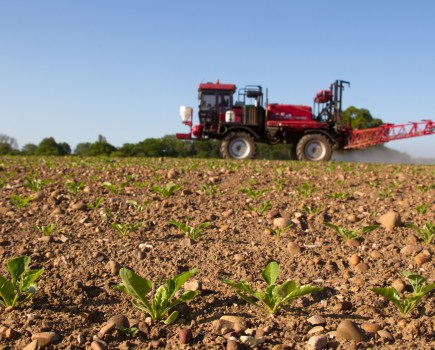Good soil moisture and adequate temperatures should result in positive stale seedbed performance this autumn, say experts.
Last year’s dry August and September led to many cultural control methods being less effective than usual. This was followed by reduced crop competition due to a cold and wet spring, leaving many growers feeling as though their blackgrass control was unsuccessful.
However, Agrii’s Tim Horton says weeds are emerging fast this year thanks to good soil moisture and this is an excellent opportunity to reduce populations before the drill enters the field.
“In areas known to have a higher burden of grassweeds, I recommend not drilling until at least 20 October, if farmers feel they can hold on until then. Ideally, those fields have been set up with early cultivations to encourage a flush of weeds before drilling and the drill isn’t moving too much soil to stimulate fresh germination,” he says.
Crop competition
Tim advises that farmers maintain high seed rates and use competitive varieties. As part of ongoing research, Agrii screens varieties for their grassweed competitiveness to advise which are more suitable in high pressure situations (variety sustainability ratings (VSR) ).
“The most competitive wheat varieties, according to our VSR trials, are Skyfall, Tapestry and Astronomer. However, the most widely grown varieties like Champion, Dawsum and Extase are ranked one step behind these,” explains Tim.
Gowan’s Hank King says that for those who are keen to begin drilling, he encourages starting with the fields with the lowest grassweed populations and finishing with known problem fields.
“Even following reasonable cultural control, pre-emergence herbicide programmes will be crucial this autumn. We learned a lot about which combinations worked best last season following the introduction of new herbicides,” he says.
MoA diversity
“Mixing modes of action adds to control. The base product for a herbicide programme can be changed depending on the weed pressure; a higher weed burden and farmers may want to go for newer chemistry, but a flufenacet mix may be sufficient for reduced populations.
“A consistent observation from trials, including last season, is that efficacy increased whenever Avadex (tri-allate) was included in the programme. It’s a tried and tested product and farmers can be confident it’ll reliably increase grassweed control,” explains Hank.
Tim’s programmes will be built around Luximo (cinmethylin) plus a partner such as Pontos (flufenacet+ picolinafen) for fields with a known blackgrass issue. “I’d top this up with additional flufenacet, or where a farmer can apply it, Avadex,” says Tim. “If brome is an issue, then I’d ensure Avadex is applied.”
“This programme worked well last year, but there were some late flushes once the rains finally came. I expect even better control with our higher soil moisture this autumn,” he concludes.




